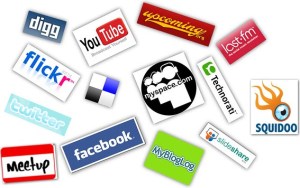The recent BMA Conference that I attended was all about Engagement—with customers, prospects, employees and other constituents important to your business. It made me ponder the meaning of the term “Engagement” in defining it in my own mind.
There was a heavy social media component to the BMA conference. Correspondingly, it could be concluded that if you aren’t heavily involved in social media, and aren’t having “conversations” through social media channels, you are not ‘engaged’ with your communities.
Is that true?
I think of constituent engagement through a broader lens. Social Media as a category is certainly a communications enabler—a series of channels, really—but it’s only one of many ways to engage with your customers and prospects. What’s important is understanding how your customer wants to be communicated with and choosing the communications medium that’s appropriate to the customer/prospect and to the particular message being delivered.
 Companies have been engaging with customers for years before Social Media—and even the Internet—existed. (And, yes, I’m old enough to remember back that far!) Initially it was face-to-face, then much of that contact migrated to the phone and mail as the distance between the service provider and the service consumer became geographically more diverse.
Companies have been engaging with customers for years before Social Media—and even the Internet—existed. (And, yes, I’m old enough to remember back that far!) Initially it was face-to-face, then much of that contact migrated to the phone and mail as the distance between the service provider and the service consumer became geographically more diverse.
Having grown up in a small town, I engaged with the grocer every time I needed milk, with the owner of the service station every time I needed gas for the lawn mower, and with the owner of the hardware store every time I needed a part to fix it. Communication was instantaneous and feedback was immediate.
In today’s global economy, specialization and geographic scope have increased the literal and figurative distance between company and customer. And technology has given both companies and customers new ways to bridge that gap. Mail, Phone, Blogs, Tweets, Links, and Likes all have their place in the mix.
The “old” channels are far from dead and the old-fashioned handshake still has a place in the mix. But for most companies to optimally manage customer engagement in today’s environment, they must select the appropriate channel from the myriad of communication channels available to deliver a particular message, to a particular constituent, at a particular time. And, to be effective they must have the systems or partners in place to produce, manage, track, and respond to those communications across all channels as they occur.
You may be in charge of choosing how you communicate with your customers (choose wisely!), but they are in charge of how, when, and where they respond to you. Are you prepared to capture those responses and integrate them with your other customer knowledge so you can respond appropriately and in a timely manner? Marketers who aren’t seamlessly integrating their Web channel analytics and consumer engagement insights with their multichannel marketing data will soon find themselves playing catch up.
About the Author:
George Hollister is a B2B Practice Leader with SIGMA Marketing Group. Connect with George on or follow him on .


{ 2 comments… read them below or add one }
Thanks for this post – couldn’t agree more. While Social Media is a great channel for listening to and engaging in conversations with customers, there are many, many more channels that need to be leveraged and combined into a holistic voice of the customer picture. This year, I am looking at tools & practices that enable that process of integrating web analytics, social media and maybe even offline channels. Suggestions are welcome & appreciated!
-Nikki
Nikki (via George): your thinking is spot on – there is indeed so much more to a customer’s life than social media, hence there are so many more opportunities for engagement. I am in the process of fine-tuning an Engagement measurement tool that works across the lifecycle of cutomer:brand relationship, incorporating multiple metrics with varying importance. It’s called N-Gauge Level ™, reach out to me at keith (at) nutlug (dot) com if you have interest. Thanks!
Keith
{ 7 trackbacks }